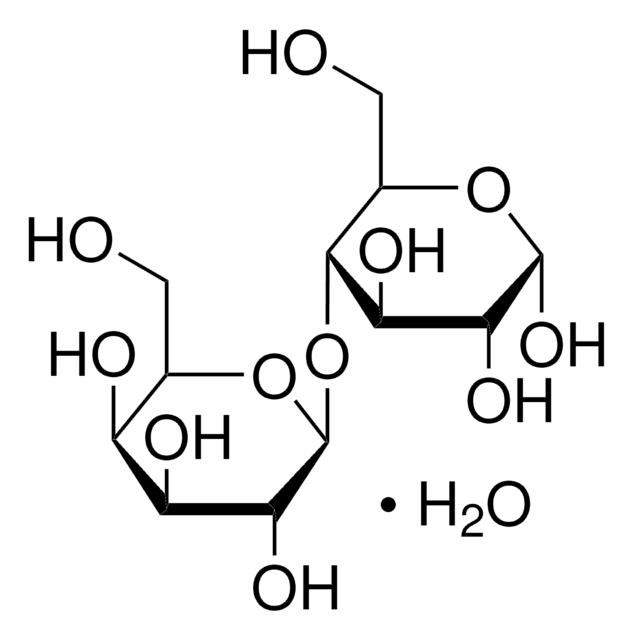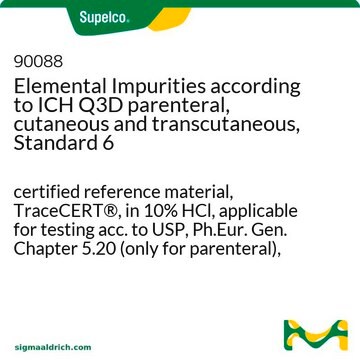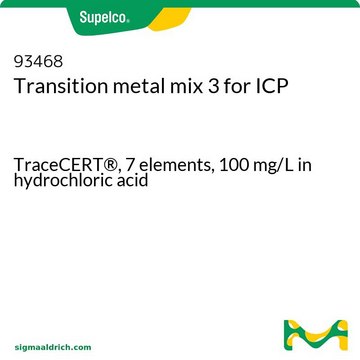89118
Elemental Impurities according to ICH Q3D parenteral, Standard 1
(in 12% nitric acid), TraceCERT®, applicable for testing acc. to USP<232>, Ph.Eur. Gen. Chapter 5.20
Synonym(s):
ICH Q3D Elemental Impurity Analysis Standard
About This Item
Recommended Products
grade
certified reference material
TraceCERT®
Quality Level
agency
according to ICH Q3D
according to Ph. Eur.
according to USP
product line
TraceCERT®
shelf life
limited shelf life, expiry date on the label
composition
Ag, 10 mg/L
As, 15 mg/L
Cd, 2 mg/L
Co, 5 mg/L
Hg, 3 mg/L
Ni, 20 mg/L
Pb, 5 mg/L
Se, 80 mg/L
Tl, 8 mg/L
V, 10 mg/L
concentration
(in 12% nitric acid)
technique(s)
ICP: suitable
format
multi-component solution
General description
Certified content incl. uncertainty and expiry date are given on the certificate.
Download your certificate at: http://www.sigma-aldrich.com.
Application
- Application of ICH Guidelines for the Assessment and Control of Elemental Impurities in Parecoxib Sodium by Graphite-Digestion and ICP-MS: This research demonstrates the application of ICH Q3D guidelines for evaluating elemental impurities in parenteral formulations, specifically using graphite-digestion and ICP-MS techniques on Parecoxib Sodium. This approach ensures compliance with pharmaceutical safety standards, emphasizing its critical role in maintaining drug quality and patient safety (Hao et al., 2022).
Preparation Note
Legal Information
Related product
signalword
Danger
hcodes
Hazard Classifications
Eye Dam. 1 - Met. Corr. 1 - Skin Corr. 1B
supp_hazards
wgk_germany
WGK 2
Choose from one of the most recent versions:
Already Own This Product?
Find documentation for the products that you have recently purchased in the Document Library.
Customers Also Viewed
Articles
Elemental impurities in drug products pose a risk to patient health due to toxicological effects, and their levels should be controlled within acceptable limits. Find analytical methods and materials for impurity assessment.
In 2009, the International Conference on Harmonization (ICH) proposed the development of a new harmonized guideline to provide a global policy for limiting metal impurities in drug products and ingredients. This approach provides clear regulatory guidance on specification limits for elemental impurities worldwide and logically should have an impact on the work of the national regulatory bodies in having transparent and comparable results.
Our team of scientists has experience in all areas of research including Life Science, Material Science, Chemical Synthesis, Chromatography, Analytical and many others.
Contact Technical Service












